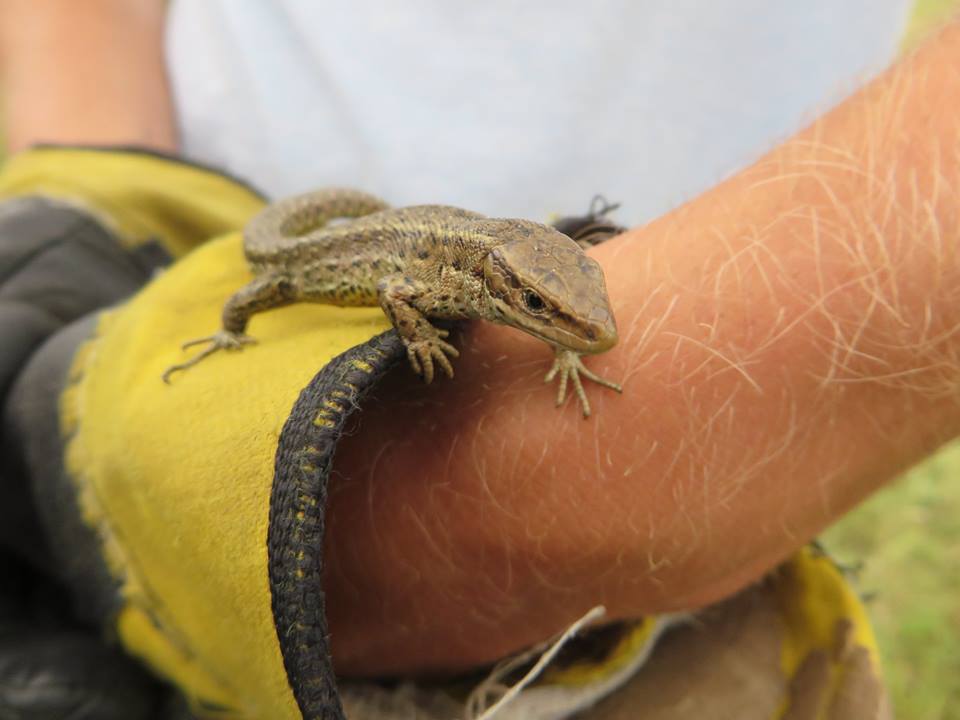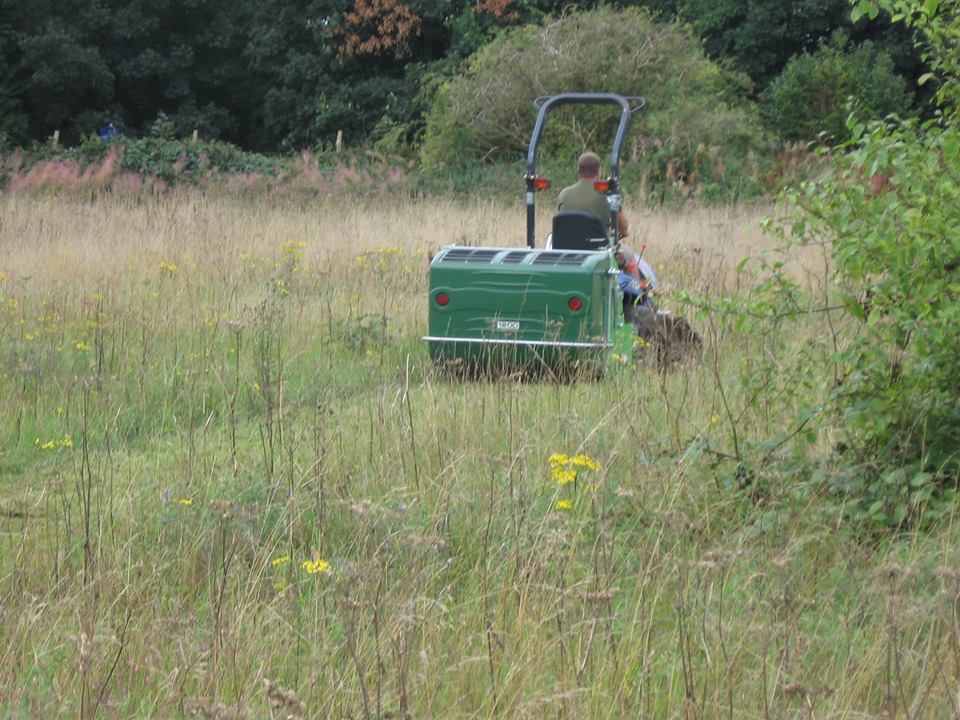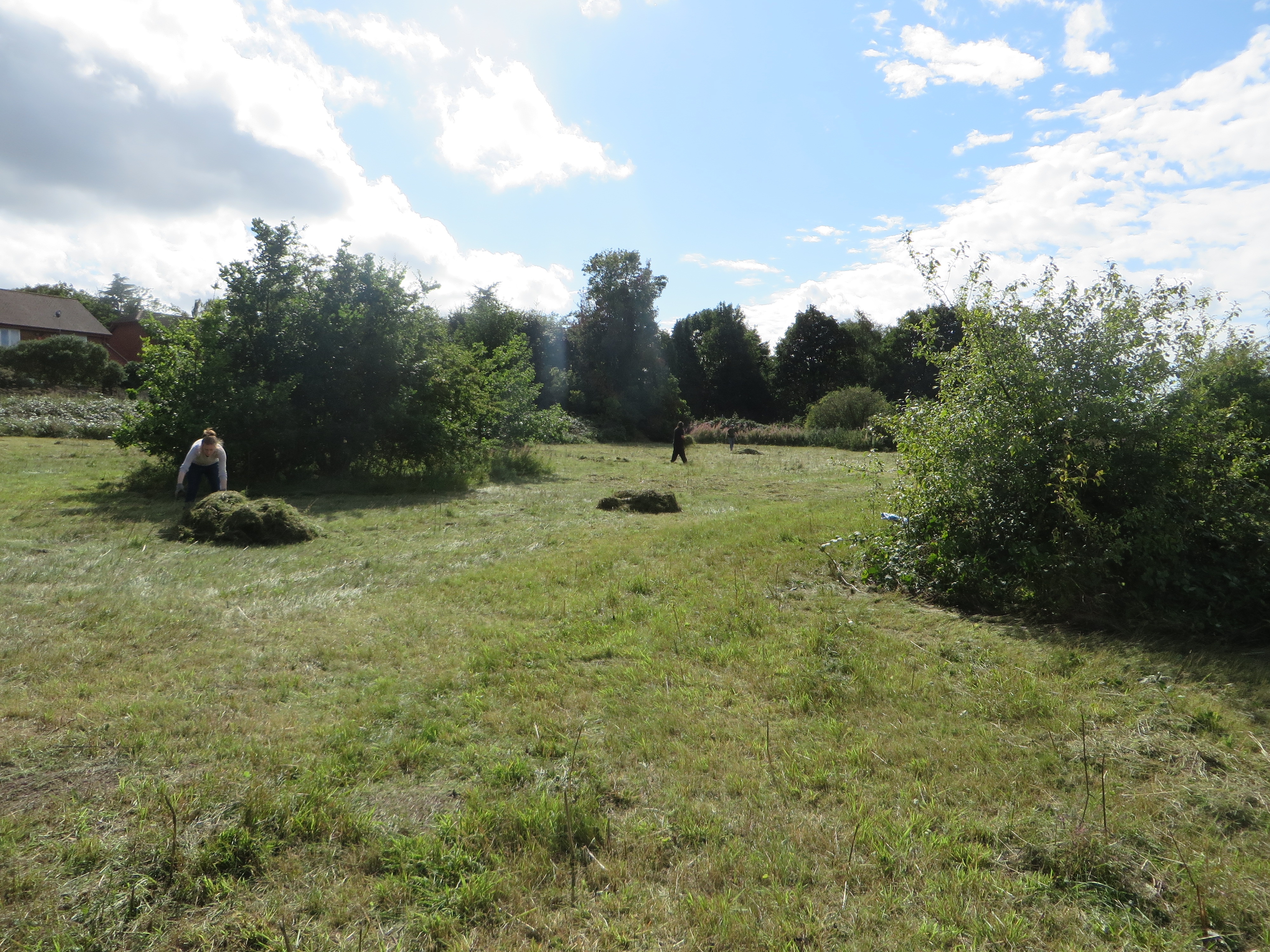One of our main aims at the SNCV is the conservation and improvement of sites of wildlife value throughout the borough. On Thursday, the team headed over to Roundshaw Downs with the intent of doing just that through ‘sward enhancement’. This is a management technique that aims to increase the botanical diversity of a grassland and can be achieved through the use of ‘green hay’. With the loss of 97% of British species rich grasslands and meadows since the 1930’s (Fuller, 1987), the restoration of grassland is an absolute must!
Specifically, ‘green hay’ refers to the mowing of species rich grassland in order to attain wild-flower and grass seed. In conservation and restoration projects, ‘green hay’ cuttings are taken from a ‘donor’ site that is typically species rich in flowers. These cuttings are then transferred to a nearby ‘receptor’ site where species diversity is poorer. The main advantages of ‘green hay’ are that it is considerably cheaper that buying commercial seeds and using fresh seed from a local source tends to enhance the success of wild-flower establishment, as site conditions (i.e. pH, moisture and soil texture) will be similar to that of the ‘donor’ site.
For the ‘green hay’ process to be effective, preparation of the receptor site is crucial. This involves the mowing and raking of a site. The mowing process creates a short sward (the physical characteristic of the grass, such as patchy, dense, tall etc) structure and areas of bare ground that will enhance the establishment of ‘green hay’ seed. Once mowed, raking will break up areas of thatch that will make the areas of bare earth more accessible, while removing excess nutrients which would otherwise favour the growth of grasses, weeds and other invasive species. Once the ‘green hay’ is cut from the ‘donor’ site, it is immediately transferred and spread to the prepared ‘receptor’ site, otherwise the seeds will be left to shed, thereby not establishing themselves on the desired area. In modern agriculture, the use of hay bales are not conducive to the creation of wild-flower meadows as compaction forces the hay to heat up and decompose, causing death to the seed.
So, armed with a flail collector (a glorified lawn mower), rakes and the SNCV, we embarked on our green hay mission at Roundshaw Downs. Our receptor site was previously dominated by rosebay willowherb Chamerion angustifolium and generally species poor. Over the past two years, the SNCV have regularly mowed the site and removed unwanted species (such as brambles Rubus fruiticosus) to allow grasses and wild-flowers to prosper. Encouragingly, this has proved incredibly effective as willowherb and bramble growth appears to have significantly reduced, while on Thursday, wild-flowers such as toadflax Linaria vulgaris and red bartsia Odontites vernus were plentiful. However, we’d still like to see more! So, after some hours of mowing and raking (rigorous, yet wholly satisfying), green hay was collected from a species rich area of Roundshaw about 100-200m away from the receptor site. As well as being species rich, our ‘green hay’ contains the desirable greater yellow rattle Rhinanthus angustifolius. As a hemi-parasite, this species partially restricts the growth of grasses, thus opening the sward and benefiting the development of wild-flowers. Further, greater yellow rattle is considered ‘nationally rare’ and Croydon/Sutton contains a large natural stronghold for this plant. Therefore our efforts on Roundshaw Downs are having numerous beneficial impacts for wild-flowers on a national scale as we are improving the coverage of nationally rare species, while encouraging wild-flower growth. Once collected, our ‘green hay’ was delicately scattered across the ‘receptor’ site and now we have to wait and see what happens!

Just one of the numerous common lizards (Zootoca vivipara) observed on our ‘receptor’ site. This is a priority species in the UK.
This is the first time we have applied the technique of green hay, so it will be fascinating to see how well this method works. As previously mentioned, the loss of British grasslands and meadows is distressing, so it is vital that we develop and restore these habitats while monitoring our progress. We hope that with appropriate long term management, the restoration of grasslands can be achieved and that here in Sutton, we can help improve the conditions of our British grasslands.










1 Pingback